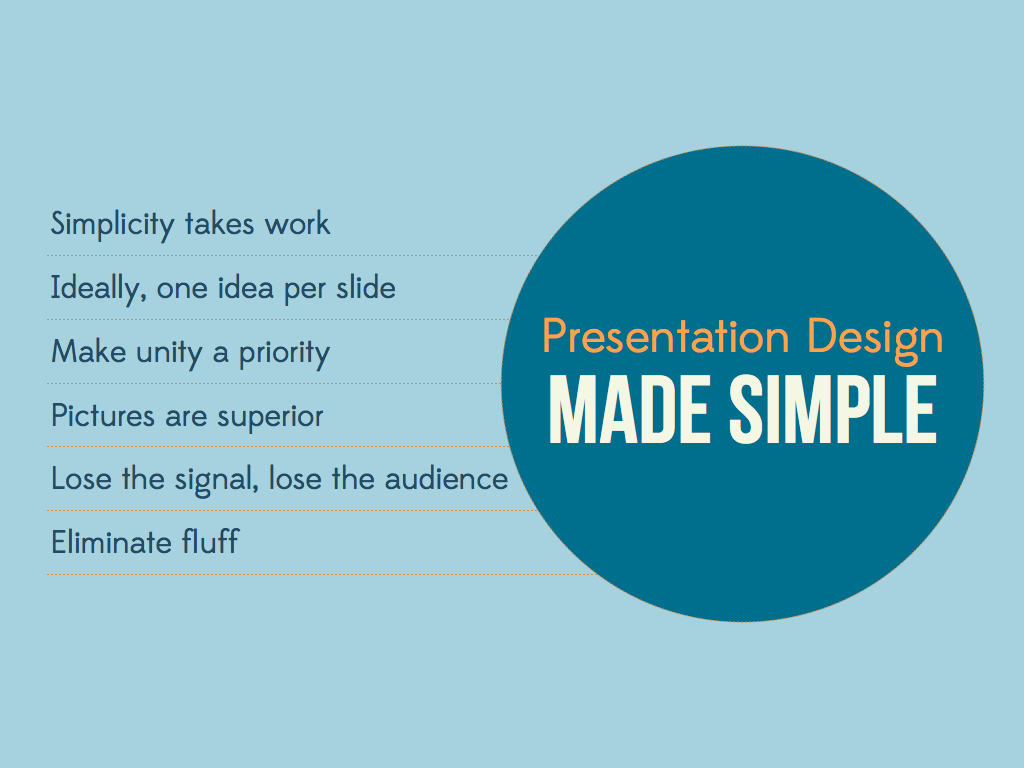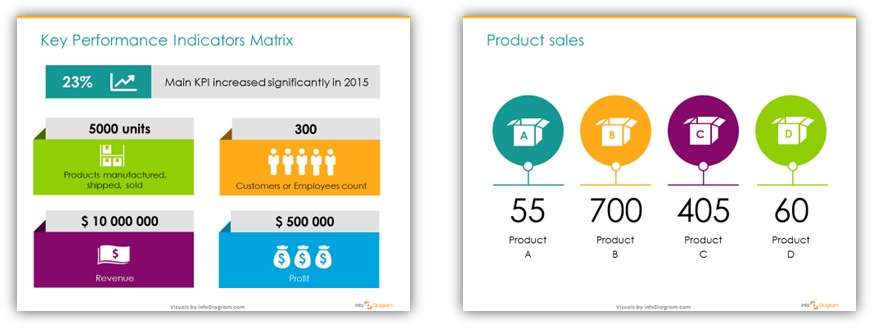
How to Make a Presentation Stick
Remember how in “Presenting 101” they taught us that giving a presentation is all about getting an idea across? There’s an unfortunate truth they don’t tell you, though: You can be great at getting across a message, but that doesn’t necessarily mean you’ll be successful as a presenter. What you need is stickiness. While your precious message might hit every single audience member head-on, if it then slides right off, you didn’t accomplish your goal. Your message has got to leave a lasting impression.
Below are six principles for achieving stickiness. Follow these and your presentations will be as pleasantly sticky as the best Krispy Kreme you’ve ever had.
1. Be Memorable
A simple message is easy to understand, and easy to relay with just a few words or images. Because it is “short and sweet,” it’s easier to remember than something long and complex.
Proverbs are great examples of this. Nuggets of wisdom like, “Treat others as you would like them to treat you” have traveled down through thousands of years and across the whole world.
Applying the idea of simplicity to presentations gives us practical rules like these:
Stick to just one core message per slide
Use clear, easily recognizable and highly communicative images whenever possible
If a slide begins to get crowded, spread your information over two or more slides instead.

2. Be a 328-Foot-Tall Radioactive Lizard
…but seriously: Leverage the unexpected.
Once you’ve boiled your message down to its core simplicity, work out how to deliver it in a way the audience doesn’t expect:
Make a wild but legitimate comparison or contrast
Use a startling but point-making image
Do or say something that punches through normal expectancies; make a fast break from the familiar patterns of every presentation you’ve ever yawned through
Do this well and you’ll have their complete attention – and their continued attention.
An unexpected element can burn a fact or event strongly into the memory. But that element doesn’t have to be huge to be effective:
Give a slide or slides a black background instead of the traditional white
Lose your borders and backgrounds and fill the screen with a striking image (add an unexpected sound bite for even greater impact)
Break up a serious presentation with a bit of humor
A surprising or thought-provoking comparison can also be effective as an unexpected element.
Below is an example of humor:

3. Concrete Clout
Use of concrete examples and other elements increases memorability. Dump the abstract ideas, generalizations, piles of dry statistics and (please!!) the corporate-cool buzzwords and clichés. Get real:
Give specific, familiar examples, analogies and comparisons
State definite, easily-visualized results or consequences
Put things into the context of your audience members’ lives and experience
These things powerfully connect what you say with things and ideas already anchored in people’s minds and memories.
Below is an example of demonstrating a concrete idea:

4. Credibility: Belief is Sticky
Our next stickiness-enhancer is credibility. By presenting your point with excellent credentials, you give your audience good reason to believe you by connecting your subject with someone or something they already trust and believe in. At once you build credibility by association.
Case histories, anecdotes, independent user reviews and the like can also act as credentials, bolstering believability.
For example, below is an infographic of annual sales numbers and KPI. Visual charts lend credibility to any presentation.

Speaking of credibility, why should you believe what I’m saying in this post? Well, earlier I mentioned the book Made to Stick as an important source. That book is the product of extensive research and testing by respected experts in the fields of business and education, whose work has been published in prestigious scientific and business publications.
5. Emotionally Sticky
Emotions can also play a major role in establishing credibility. If you can connect with your audience to the degree that they are sharing your feelings on your talk’s subject, they will also be far more receptive to your message. You’re adding an emotional “tag” to that message, further embedding it in their minds and memories.
This shared-feelings phenomenon is exactly what the term “sympathetic audience” refers to. “Sympathy” comes from Greek words meaning “together feeling” or “same feeling.”
There are many speaker tools and techniques for gaining an emotional connection and rapport with your audience. That’s really a whole subject of its own.
6. Weave a Sticky Story
If you can manage to weave a story into your presentation, you’ve once again increased its sticking power. Think about it. Which kind of “presentation” from your childhood do you remember more vividly today: a story you were told (by your grandma, for example) or a lecture you heard in school?
Let’s take the famous story of The Little Mermaid. Maybe it was read to you as a child, or perhaps you saw the movie version. You might not know or remember any of the tale’s background, like when and where it was written, or by whom, but the bulk of the tale itself probably stuck with you quite well.
A good story normally contains all the elements we’ve looked at above – simplicity, unexpectedness, emotions and the rest. It combines and amplifies them, adding interest and curiosity to make the whole package very sticky indeed.
One approach to story building is to begin with a mystery or challenge – the mystery or challenge that your product (or strategy or whatever) answers or solves.
In some cases, you can make the story about you, at least in part. This can add authenticity and build the emotion and sympathy factor mentioned earlier. Just don’t go overboard and make your talk all about you, when it’s supposed to highlight something else altogether.
For a deeper dig into the craft of storytelling, have a look at this step-by-step guide.


